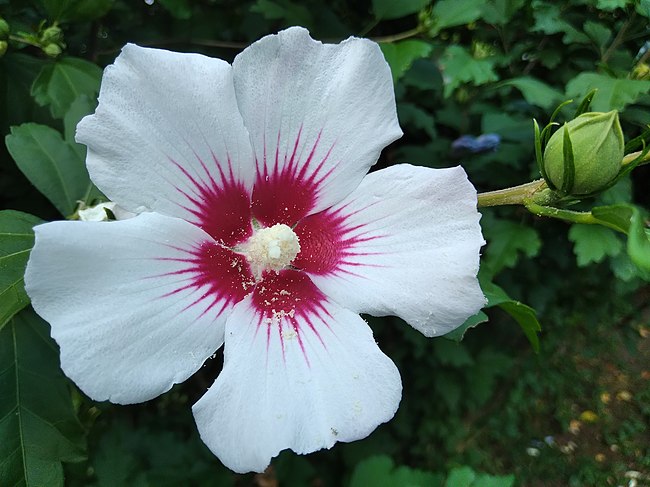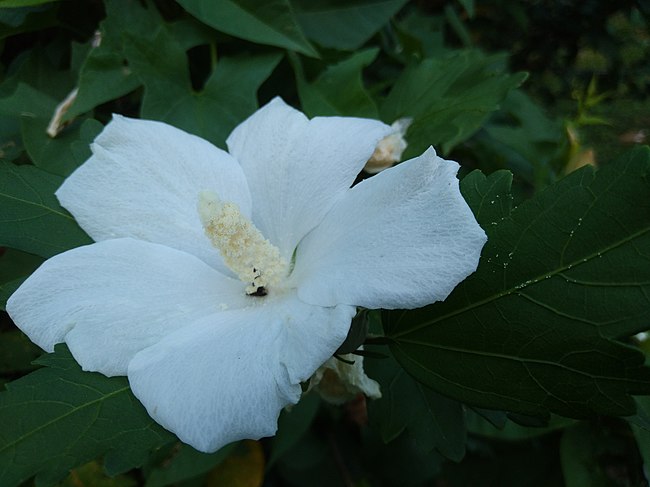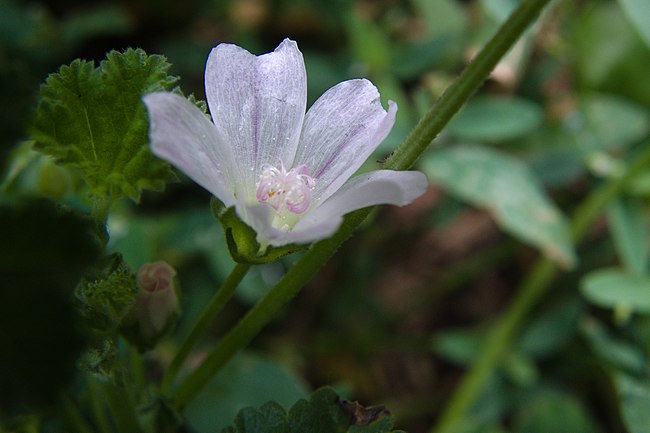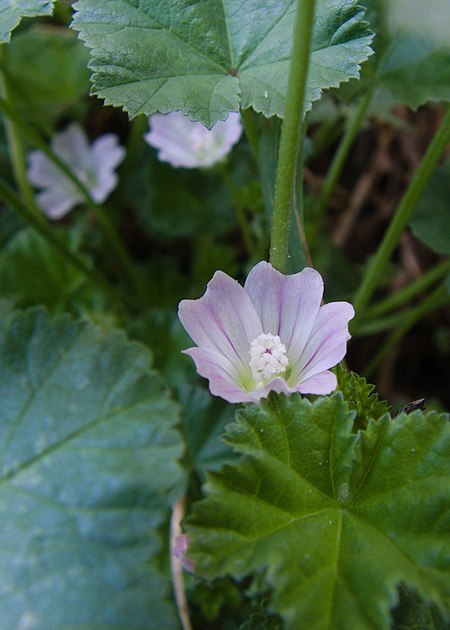
A common garden shrub that has become something of a pest, invading hedges especially, from which it is very difficult to extricate. Perhaps the best solution is to let the Roses of Sharon take over the hedge: they make a good, dense hedge themselves, and they have beautiful flowers in a number of different color combinations. In Pittsburgh they happily bloom well into October if the weather cooperates. The typical Mallow-family column of stamens sheds huge amounts of pollen, and these flowers are favorites with bees; below is a bumblebee drunk on pollen.

Gray describes the genus and the species:
HIBISCUS. Calyx involucellate at the base by a row of numerous bractlets, 5-cleft. Column of stamens long, bearing anthers for much of its length. Styles united, stigmas 5, capitate. Fruit a 5-celled loculicidal pod. Seeds several or many in each cell. —Herbs or shrubs, usually with large and showy flowers. (An old Greek and Latin name of unknown meaning.)
Calyx herbaceous, not inflated about the capsule; perennials.
Shrub with rhombic-ovate glabrous leaves.
H. syrìacus L. (SHRUBBY ALTHAEA of gardens.) Tall shrub, smooth; leaves rhombic- or wedge-ovate, pointed, cut-toothed or lobed; corolla usually rose-color. Established in thickets and by roadsides, N. J., Pa., and southw. July-Sept. (Introd. from Asia.)















